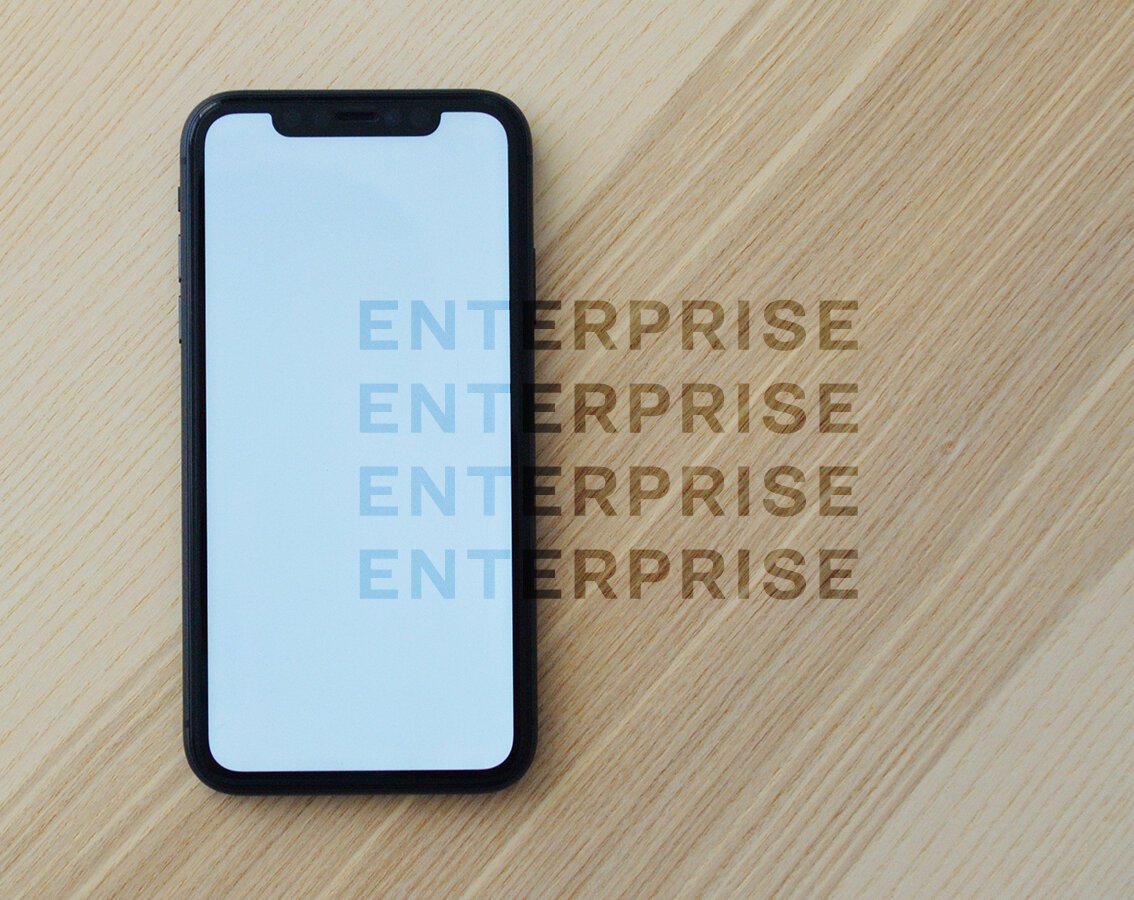blog
Your Battle Plan for Tackling Enterprise App Development Challenges
By Mohan S App development May 6, 2021

Enterprise apps are a gem because they streamline operations, can scale efficiently, and solve complex business problems with a custom, integrated, and scalable solution designed for the enterprise.
And this gem often requires substantial upfront investment in time, talent, and technology, with long development cycles that can strain resources. Discover about the best practices in enterprise apps.
Compared to typical app development projects, enterprise app development projects require a more advanced and tailored process, as they are built to address the complex, organization-wide needs rather than just generalized requirements.
Because the venture requires intensive resources, it greatly helps to understand the potential challenges that can arrive along the way. We'll start by looking at the situations within the enterprise that can be barriers to the end results and then the technical challenges that can arise during development and integration.
Organizational Challenges
1. Slow Decision-Making and Bureaucracy
Challenge:
Excessive approvals, unclear ownership, or fear of failure often stall progress.
Solutions:
Autonomy with accountability: Give teams ownership over outcomes, not just tasks.
Clear decision frameworks: Use RAPID or DACI models to make responsibilities transparent.
2. Unclear or Changing Requirements
Challenge:
Requirements often shift mid-project due to evolving stakeholder priorities, unclear specs, or lack of upfront validation.
Solutions:
Continuous discovery: Involve users and stakeholders throughout the sprint lifecycle to validate assumptions.
Lean MVP mindset: Ship minimal, functional iterations and evolve based on usage data.
AI/ML Opportunity: AI tools can cluster feature requests, extract themes from feedback, and even generate user stories from meetings or transcripts.
You may like to read: Mobile app strategy blueprint for enterprises
3. Inadequate Resourcing or Unrealistic Timelines
Challenge:
Development teams are often stretched too thin or are expected to deliver unrealistic scopes within tight deadlines.
Solutions:
Capacity planning tools: Estimate based on historic team velocity and developer availability.
Clear prioritization frameworks: Use RICE or MoSCoW to surface what’s mission-critical.
Technical Challenges
1. Integration with Legacy Systems
Challenge: Legacy systems, often built on outdated technologies, pose significant integration challenges due to incompatible interfaces and lack of documentation.
Solutions:
Enterprise Application Integration (EAI): Utilize EAI platforms that offer adapters and middleware to bridge modern applications with legacy systems, facilitating data transformation and communication.
API Abstraction: Develop standardized APIs to encapsulate legacy functionalities, enabling seamless interaction with new applications.
AI/ML Enhancement: Employ AI to analyze legacy codebases, identifying integration points and suggesting optimal interfacing methods. ML models can predict potential integration issues by learning from past projects, reducing unforeseen complications.
2. Security and Compliance
Challenge: Ensuring data security and regulatory compliance is paramount, especially with sensitive enterprise data subject to regulations like GDPR and Singapore's PDPA.
Solutions:
Robust Security Practices: Implement strong authentication protocols, data encryption, and regular security audits. Incorporate features like corporate single sign-on (SSO) to enhance security.
Bug Bounty Programs: Encourage ethical hacking to identify and rectify vulnerabilities proactively.
AI/ML Enhancement: Leverage AI algorithms to monitor systems in real-time, detecting anomalies and potential security breaches. ML models can recognize patterns indicative of non-compliance, enabling proactive measures.
3. Scalability and Performance
Challenge: As enterprises grow, applications must scale to accommodate increased user loads and data volumes without compromising performance.
Solutions:
Cloud-Based Architectures: Adopt cloud infrastructures with auto-scaling capabilities to dynamically allocate resources based on demand.
Performance Optimization: Implement efficient database management practices and optimize code to reduce latency and improve response times.
AI/ML Enhancement: Use AI to predict traffic patterns and optimize resource allocation. ML models can analyze performance metrics to identify bottlenecks and suggest improvements, ensuring efficient scaling.
4. User Experience and Design
Challenge: Complex enterprise applications can lead to usability challenges, affecting user adoption and productivity.
Solutions:
Intuitive Interfaces: Design user-friendly interfaces aligned with user workflows. Conduct usability testing to gather feedback and make iterative improvements.
Consistent Design Language: Maintain a consistent design language across the application to reduce the learning curve and enhance user satisfaction.
AI/ML Enhancement: Employ AI to analyze user behavior, personalizing interfaces and workflows. ML models can predict user preferences, enabling dynamic adjustments to the UI/UX for enhanced engagement.
5. Development Environment Challenges
Challenge: Replicating complex production environments for development and testing is often resource-intensive.
Solutions:
Containerization: Use tools like Docker to create consistent development environments that mirror production settings, facilitating easier testing and deployment.
CI/CD Pipelines: Implement Continuous Integration/Continuous Deployment pipelines to automate testing and deployment processes, ensuring faster and more reliable releases.
AI/ML Enhancement: AI can automate the creation of virtual environments that mimic production settings. ML models can predict potential deployment issues by analyzing code changes, facilitating smoother transitions from development to production.
6. Technical Debt and Legacy Systems
Challenge: Accumulated technical debt hampers innovation and increases maintenance costs.
Solutions:
Incremental Modernization: Gradually refactor and modernize components of the application, prioritizing areas with the highest impact on performance and maintainability.
Adopt Modern Architectures: Transition to microservices or serverless architectures to enhance scalability and flexibility.
AI/ML Enhancement: AI tools can assess codebases to identify areas with high technical debt. ML models can prioritize refactoring efforts by predicting the impact of changes, enabling targeted modernization strategies.
7. Tooling and Infrastructure Limitations
Challenge: Inadequate tooling is a barrier to development efficiency and code quality.
Solutions:
Invest in Robust Tooling: Adopt modern development tools and frameworks that support code analysis, debugging, and performance monitoring.
Standardize Development Practices: Establish coding standards and best practices to ensure consistency and maintainability across the development team.
AI/ML Enhancement: AI-powered development tools can automate code reviews, detect bugs, and suggest optimizations. ML models can adapt to developers' coding styles, providing personalized assistance and improving overall productivity.
By involving the right tools, technology and leadership thoughtfully into the enterprise application development process, organizations can not only address existing challenges but also build more resilient, efficient, and user-centric applications.


